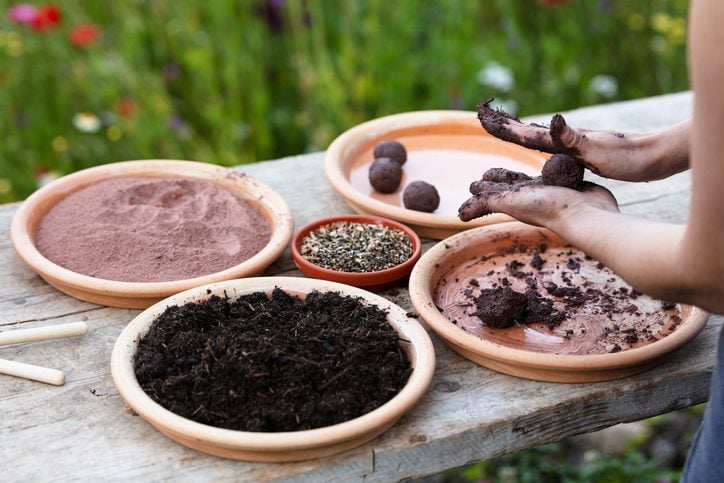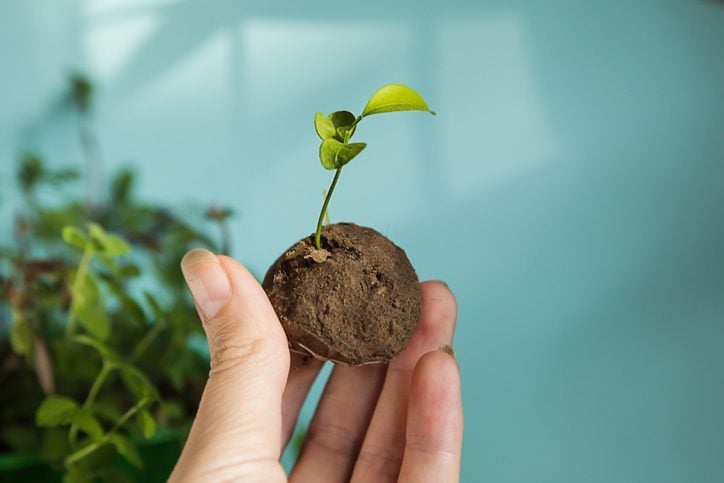As spring approaches, many home gardeners are unpacking their trowels, planning their seed rows and stocking up on potting soil. But some diligent gardeners work year-round, scattering seeds to the wind to create cheerful bursts of color wherever they go. These environmental activists, known as “guerrilla gardeners,” have gained popularity in recent years on social media, creating videos showcasing how to start a guerrilla garden, how to “seed bomb” empty lots, and more.
@treasurewellwisher Noninvasive species only #planttok #guerillagardening ♬ Fairy Fountain – Mikel & GameChops
But these videos have left viewers with numerous questions about the controversial practice: what is guerrilla gardening? Is it even legal? When did it start? Should I get involved? Consider this your friendly primer to this long-standing activist practice.
What Is Guerrilla Gardening?
Guerrilla gardening is the practice of planting the seeds of edible plants or flowers on unused or aesthetically unpleasing land. It may be done with or without the consent of the property owner. Guerrilla gardening can take a variety of forms, from designing and planting traditional garden plots for an underserved community to “seed bombing,” or throwing balls of seeds out of a car window into a lot.
How Did Guerrilla Gardening Start?

According to DenGarden.com, guerrilla gardening “has its roots in the 1970s in New York City and has since spread to other cities around the world.” The beginning of the movement is largely credited to activist Liz Kristy and the Green Guerrilla group. From there, guerrilla gardening has spread globally, and many key figures are continuing Kristy’s work. Richard Reynolds, for example, is a British activist whose guerrilla gardening efforts have been memorialized in South London. Additionally, Ron Finley of south central LA founded the Ron Finley Project to help teach guerrilla gardening techniques.
What Are Some Examples of Guerrilla Gardening?
Numerous established community gardens across America originally started as guerrilla gardens. The Liz Kristy Community Garden in Manhattan is an obvious tribute to guerrilla gardeners, but you may have also encountered other guerrilla gardens, such as the Garden of Hope in Philadelphia, the Green Street Community Garden in Chicago, or the Phoenix Community Garden in San Francisco.
Is Guerrilla Gardening Legal?
Not exactly. Guerrilla gardening was inherently envisioned as an illegal, anarchistic act, as it depended upon planting without permission and cultivating others’ land. However, in recent years, the definition has expanded, and now the term also gestures towards those gardening on public land, often with permission. In short, the legality of your guerrilla gardening practice depends on how exactly you pursue it.
How Can I Guerrilla Garden Legally?

If you’re a nature lover, you may be considering starting your own guerrilla gardening practice. While growing more plants is not typically a bad endeavor, it is worth considering a few factors before you start chucking seeds about.
First, as this TikToker explains, you must choose plants that are appropriate for your area. Opt for native, noninvasive varietals that will not choke out the area’s other plants.
Additionally, select your spot incredibly carefully. Choose a small, untended plot that is not owned by anyone. Discuss your gardening decision with any nearby stores or residents (yes, this takes away a little bit of the anarchist appeal, but it also ensures you are accurately supporting the community you’re aiming to help).
@octaviachill Part 2 will be choosing what to plant! 🌻🥕🌳🌷 #guerrillagardening #guerillagardening #anarchy #activism #environmentalist ♬ original sound – Ellen Miles
Finally, call your local government to ensure you are not unknowingly breaking any municipal laws. And if guerrilla gardening still feels a little too risky, you can always volunteer with or start a community garden, or simply share the fruits of your own labor with food pantries or others in need.
Did you miss our previous article...
https://rsssuperfeeds.com/life-hacks/how-to-clean-and-lubricate-a-bicycle-chain






